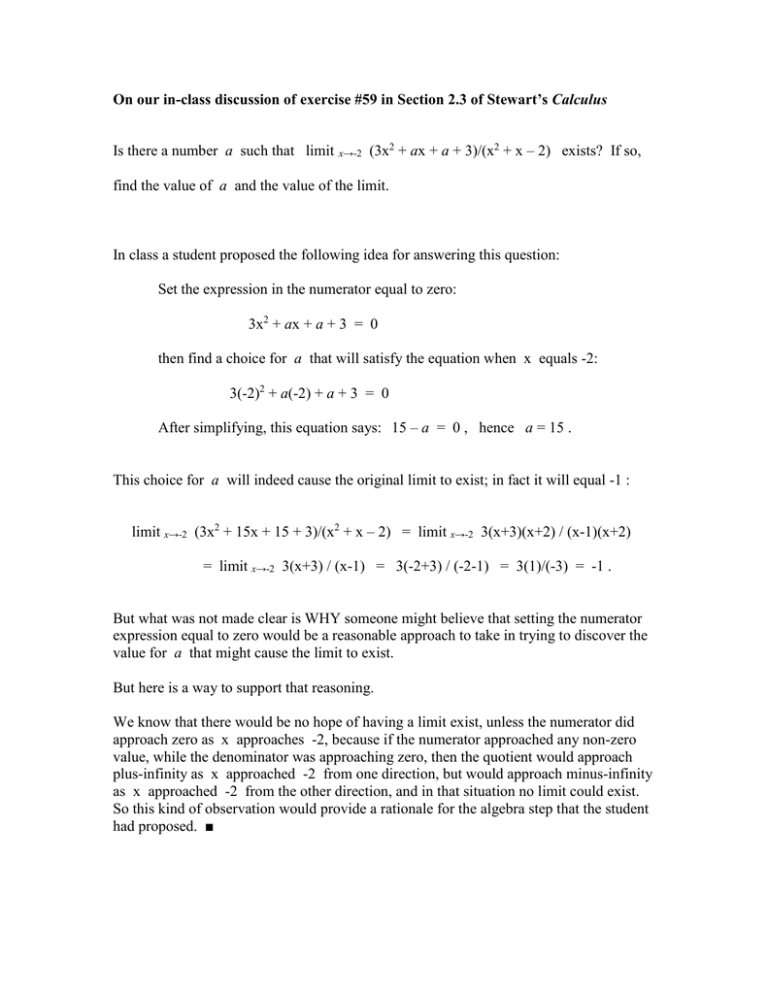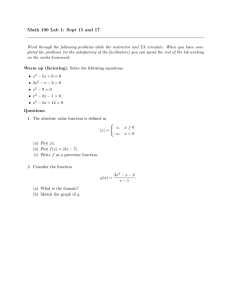Exercise 23
advertisement

On our in-class discussion of exercise #59 in Section 2.3 of Stewart’s Calculus Is there a number a such that limit x→-2 (3x2 + ax + a + 3)/(x2 + x – 2) exists? If so, find the value of a and the value of the limit. In class a student proposed the following idea for answering this question: Set the expression in the numerator equal to zero: 3x2 + ax + a + 3 = 0 then find a choice for a that will satisfy the equation when x equals -2: 3(-2)2 + a(-2) + a + 3 = 0 After simplifying, this equation says: 15 – a = 0 , hence a = 15 . This choice for a will indeed cause the original limit to exist; in fact it will equal -1 : limit x→-2 (3x2 + 15x + 15 + 3)/(x2 + x – 2) = limit x→-2 3(x+3)(x+2) / (x-1)(x+2) = limit x→-2 3(x+3) / (x-1) = 3(-2+3) / (-2-1) = 3(1)/(-3) = -1 . But what was not made clear is WHY someone might believe that setting the numerator expression equal to zero would be a reasonable approach to take in trying to discover the value for a that might cause the limit to exist. But here is a way to support that reasoning. We know that there would be no hope of having a limit exist, unless the numerator did approach zero as x approaches -2, because if the numerator approached any non-zero value, while the denominator was approaching zero, then the quotient would approach plus-infinity as x approached -2 from one direction, but would approach minus-infinity as x approached -2 from the other direction, and in that situation no limit could exist. So this kind of observation would provide a rationale for the algebra step that the student had proposed. ■
![Homework 12: Due Wednesday 7/9/14 on the interval [−1, 2]?](http://s2.studylib.net/store/data/011229144_1-0554531fc36f41436ee2a5dab6cfe618-300x300.png)


